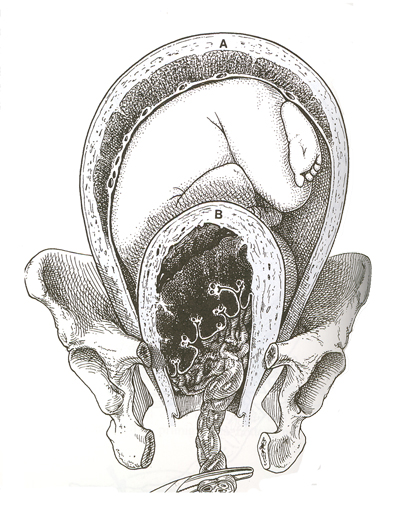Natural childbirth and homebirth advocates fabricate claims and then insist that their fabricated claims are “facts.” In that way they can ensure that their “facts” always comport with their beliefs, and in that way, they don’t have to waste any time actually learning anything about childbirth.
There’s one teensy, weensy little problem, though. Their “facts” are not facts at all. They are often stupid and deadly errors.
There are so many stupid and deadly “facts” that it is difficult to choose the one that is most stupid and most deadly, but I nominate the following bit of idiocy taken from Mothering.com:
While the baby is still attached to the pulsing cord, it is still receiving its oxygen supply. This is sort of the same logic which explains why water-born babies don’t drown.
Leaving aside for the moment the fact that babies can and DO drown at waterbirth, the claim is a complete fabrication. Why? The baby’s heartbeat makes the cord pulsate. But it is perfectly possible that the pulsing umbilical cord is carrying little or no oxygen because the placenta, which absorbs the oxygen, may stop functioning almost immediately after birth.
Simply put, the fact that the cord is pulsating tells us NOTHING about whether the the baby is receiving any oxygen.
The amount of oxygen absorbed by the placenta depends on three things: the functional ability of the placenta, the amount of blood flowing through the uterine blood vessels and the surface area of the placenta that is in contact with the uterus. As I discussed in Trust placentas? the functional ability of the placenta can be compromised by a variety of factors (such as deterioration of the placenta in postdates pregnancy) and the amount of blood flowing through the uterine vessels can be compromised by contractions which squeeze the vessels shut, and the surface area can be decreased by a partial separation of the placenta from the uterine wall.
In the immediate aftermath of birth, placental function is severely compromised as uterine blood vessels close down and as the placenta starts separating from the uterine wall. Both are the direct result of the precipitous change in uterine volume after the baby has been expelled. The following illustration, taken from Williams Obsterics, makes the change clear.
The illustration shows the uterus after the baby has been born superimposed over the uterus before the baby has been born. In the before portion, the entire surface area of the placenta adheres to the wall of the uterus. Once the baby is born, the uterus contracts around the empty space. Some uterine vessels are immediately closed cutting down the available oxygen.
Even more important is the fact that the placenta is incapable of contracting. The illustration demonstrates that as the uterus contracts the placenta is forced off the uterine wall. The space between the contracted uterine wall and the peeled off placenta fills with blood. The pressure of the blood in the enclosed space forces more placental surface off until the entire placenta comes away accompanied by a gush of blood, the blood that filled the space between the uterus and placenta.
Looking at the illustration, it is not difficult to understand that the amount of oxygen absorbed by the placenta in the before view is dramatically reduced in the after view. You could let the cord pulsate forever, and the baby would still suffocate if it did not quickly begin to breathe.
Of course, no doctor or scientist ever claimed that delayed cord clamping improves oxygenation. Delayed cord clamping is supposedly beneficial because it reduces anemia by increasing the red blood cell count. Delayed cord clamping may reduce the need for supplemental oxygen in preterm neonates, but NOT because they have more oxygen in their blood. It’s because more red blood cells mean more oxygen carrying capacity. That’s it; nothing more. There is no scientific evidence, and no scientific claims that delayed clamping provides oxygen.
The fact is that once the baby is born, the umbilical cord does NOT become a supplemental supply of oxygen because the placenta can no longer absorb very much if any oxygen. Natural childbirth and homebirth advocates have simply made up the claim because it “makes sense” to them. Of course it only makes sense if you are ignorant about placental function and if you are ignorant about placental separation in the third stage of labor. And when it comes to ignorance about childbirth, it’s hard to beat NCB and homebirth advocates.



